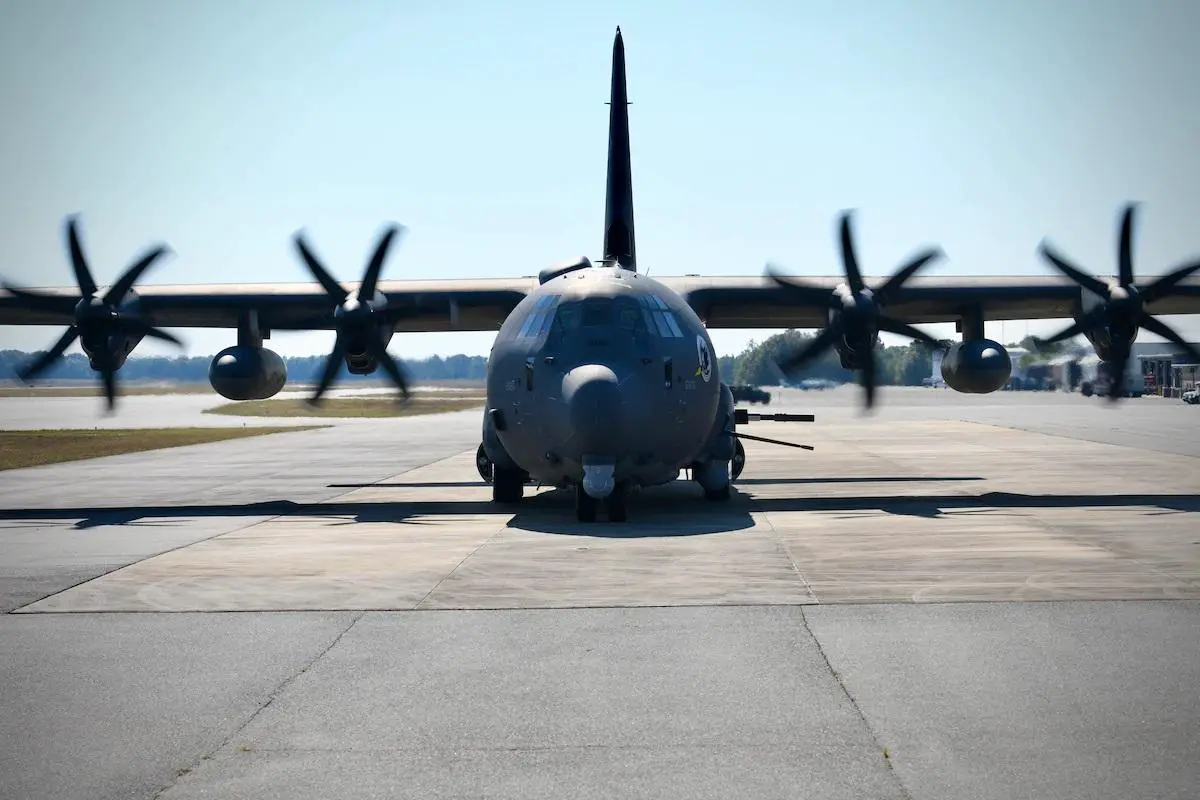The U.S. Air Force Special Operations Command received its 31st and final AC-130J Ghostrider Gunship, completing the command’s transition from the legacy AC-130W, AC-130U and AC-130H fleets. Following a commemoration ceremony at the Lockheed Martin Gunship Modification Facility in Crestview November 2, the final AC-130J was delivered to the 27th Special Operations Wing at Cannon Air Force Base, New Mexico. During the AC-130J Ghostrider dedication and delivery ceremony, Lt. Gen. Jim Slife, AFSOC commander, represented the command at the ceremony and spoke about his experience with acquiring and receiving the AC-130J. Slife recalled that it had been only a few years back when then Col. Slife, working at the Pentagon for the Office of Secretary of Defense, began the messaging and formative language that initiated the program that he’s seeing come full circle.
Lt. Col. Joe Allen, Gunship Program manager and narrator for the event, briefly discussed the history of nose art and how it became a common way of depicting the name of an airplane. He also explained how pilots would stencil names or call signs on their aircraft, providing a sense of connection and further a feeling of pride for themselves and the crew that kept the airplane flying. Aircraft #31 is no different and is being named in honor of Mr. Stan ‘Sluggo’ Siefke who was instrumental in the developments of the precision strike package prior to cutting first metal on the MC-130W. Sluggo’s impacts on Whiskey and Ghostrider have been nothing short of outstanding and are honored to have him in attendance today. In the fall of 2009, the secretary of defense decided to recapitalize the AC-130 with C-130Js to build the platforms. The first J model go into combat in the summer of 2019 while serving as the AFSOC commander.

The AC-130J Ghostrider came from a 2011 initiative which sought to acquire 16 new gunships based on newly built MC-130J Combat Shadow II special-operations tankers outfitted with a “precision strike package” to give them an attack capability, requesting $1.6 billion from fiscal years 2011 through 2015. This was to increase the size of the gunship fleet to 33 aircraft, a net increase of eight after the planned retirement of eight aging AC-130Hs. The first aircraft would be bought in fiscal 2012, followed by two in fiscal 2013, five in fiscal 2014, and the final eight in fiscal 2015. The AC-130J will follow the path of the Dragon Spear program. On 9 January 2013, the Air Force began converting the first MC-130J Combat Shadow II into an AC-130J Ghostrider. The first AC-130J Ghostrider was delivered to AFSOC on 29 July 2015. The first AC-130J gunships achieved initial operational capability (IOC) on 30 September 2017.
The AC-130J has two planned increments: the Block 10 configuration includes an internal 30 mm gun, small diameter bombs, and laser-guided missiles launched from the rear cargo door; and Block 20 configuration adds a 105 mm cannon, large aircraft infrared countermeasures, wing-mounted Hellfire missiles, and radio-frequency countermeasures. The Air Force decided to add a 105 mm cannon to the AC-130J in addition to the 30 mm cannon and smart bombs, the shells being more accurate and cheaper than dropping SDBs. AFSOC is actively pursuing a directed-energy weapon on board the AC-130J in place of the 30 mm gun by 2022, similar to the previous Advanced Tactical Laser program. It is to produce a beam of up to 120 kW, or potentially even 180–200 kW, weigh about 5,000 lb (2,300 kg), defensively destroy antiaircraft missiles, and offensively engage communications towers, boats, cars, and aircraft.













